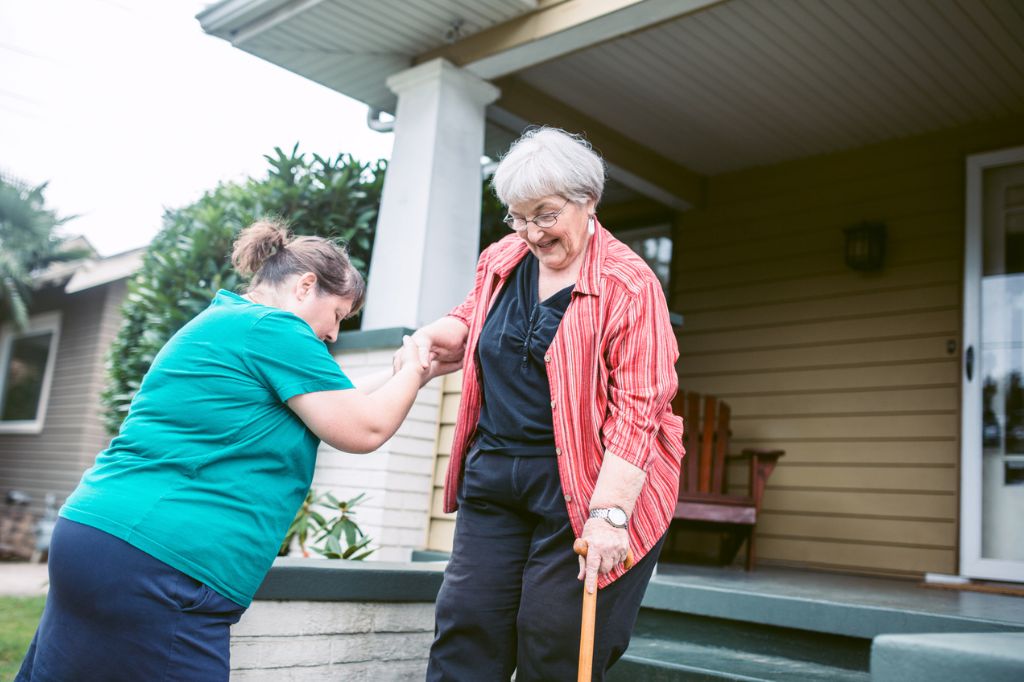Putting Your Loved One at the Center of Their Care: Learn How to Tailor Your Support


As a family caregiver, how can you make sure your loved one’s care meets their needs?
It starts with “person-centered care,” an approach that puts your care recipient’s preferences, values and life experiences at the heart of your caregiving.
Like any new skill, providing person-centered care takes practice — but it’s worth it.
Understanding Person-Centered Care
When you provide person-centered care, you focus on more than just their health needs. That means:
- Respecting your loved one’s choices, routines and identity
- Involving them in decisions about their care as much as possible
- Focusing on their emotional and social needs
- Adapting your support as their needs and preferences change over time
What this looks like in real life will depend on your unique caregiving situation.
For example, if you’re closely involved in your loved one’s daily life, you probably have a deep understanding of their routines and preferences. You may already know what foods they enjoy, or which mobility aids help them move around the house safely.
On the other hand, if you haven’t lived near your loved one for some time and you’re now stepping into a caregiving role, you’ll need to spend some time learning about their current likes, dislikes and support needs. Asking questions and involving them in decisions will help them feel comfortable with the care you provide.
If your loved one gets overwhelmed by making decisions, or has Alzheimer’s or another form of dementia, they may be confused and frustrated by constant questions about their preferences. In this case, person-centered care might involve offering simple choices, responding to their non-verbal cues, and discovering routines that reassure them.
Adapting to Changing Needs
As your loved one’s health status changes, so will their daily routines and abilities. Person-centered care means being flexible and adapting to these changes while still respecting their preferences and supporting their independence.
For instance, if they’ve always enjoyed cooking and can still do it safely, but decreased mobility makes it difficult, you might:
- Rearrange the kitchen to keep frequently used items within easy reach
- Buy adaptive tools like jar openers or lightweight cookware
- Offer to be their “sous chef,” handling tasks that have become harder for your loved one
Or have you noticed subtle changes in their vision? Sometimes, just marking the shampoo bottle with a large, easy-to-read “S” and the conditioner with a “C” can make showering easier. You could also:
- Improve lighting to prevent falls and keep them from tripping
- Label frequently used items with large print or tactile markers
- Describe food, surroundings and people in more detail to keep them engaged
The AARP Foundation Paid4Care™ hub offers free skill-building lessons to inspire your caregiving and give you some new ideas. You can also learn how to provide more flexible, personalized care.
Personalizing Care Plans
As your loved one’s needs evolve, their care team may expand. Share their background, values and preferences with the other caregivers and health care providers who come into their life. Be an advocate for including them in care decisions.
Sharing these insights about your loved one will make it much more likely that their care plan reflects who they are.
Mutual Benefits
It takes time and effort to adjust how you provide care, but the benefits are meaningful:
- Caregiving feels more rewarding for both of you.
- Your loved one can do more on their own.
- Your time together becomes more enjoyable.
- They often feel healthier and happier.
Moving Forward
As you embrace person-centered care, remember that it will naturally change over time. Be open to refining your approach and maintain open lines of communication with other family members, caregivers and health care providers.
At the end of the day, person-centered care is about treating your loved one as a whole person — not just someone who needs care. That shift of perspective can make all the difference.
Visit AARP’s Caregiver Resource Center to find more support, including information on caregiver support groups and downloadable family caregiving guides.

Find Programs That Pay
Can I get paid to be a family caregiver? Let’s find out if there are programs that might provide compensation.
Find Programs That Pay